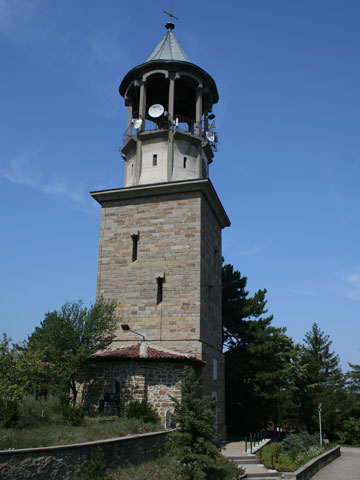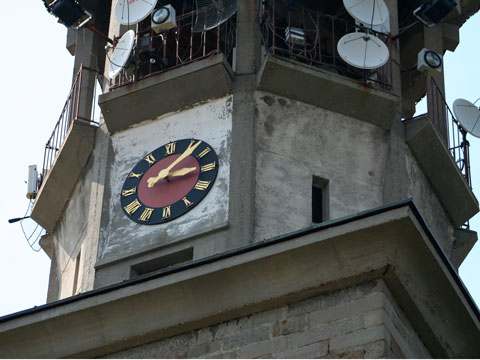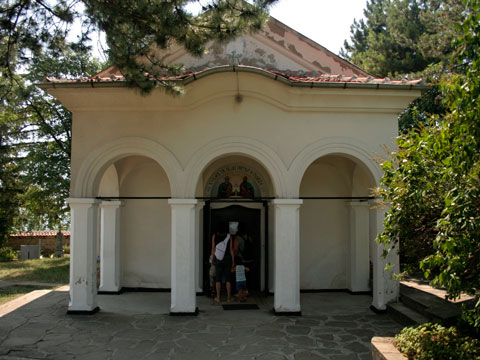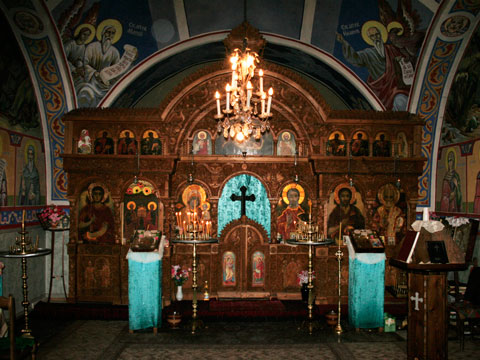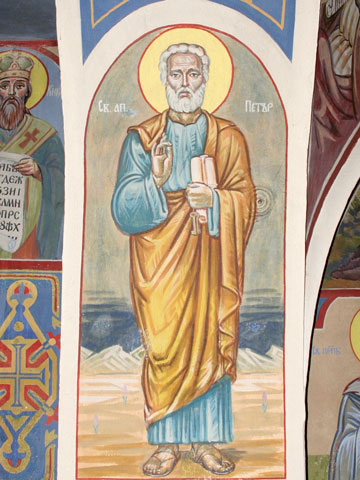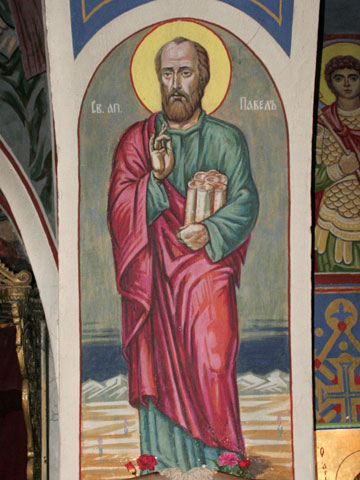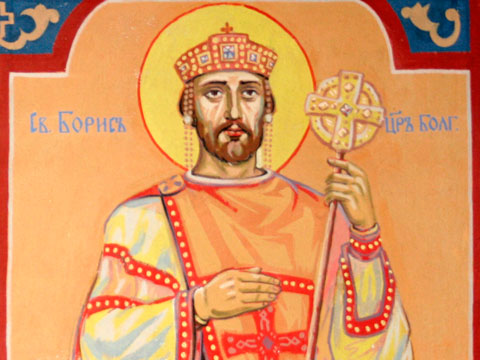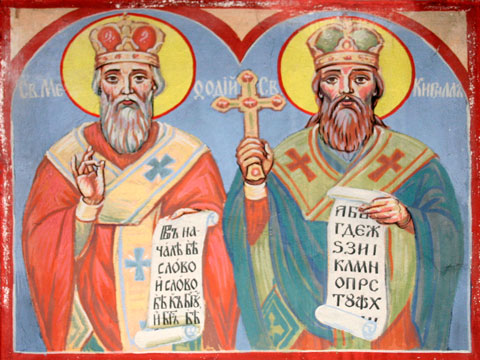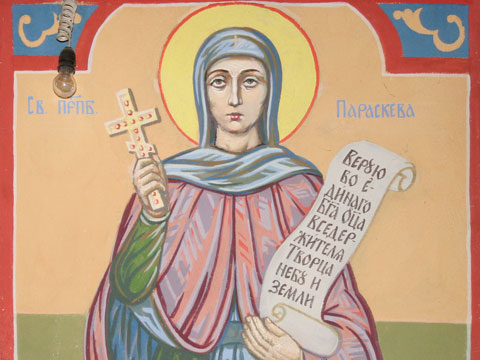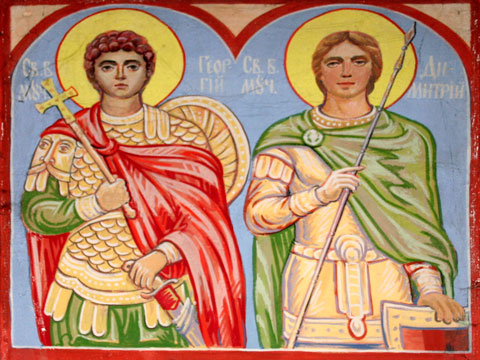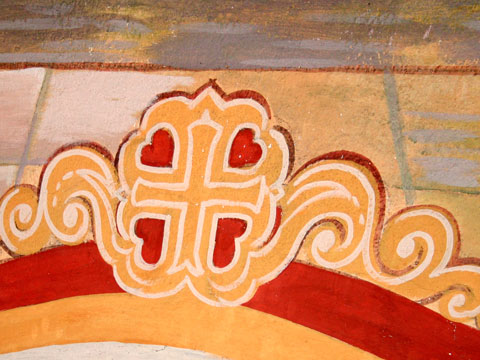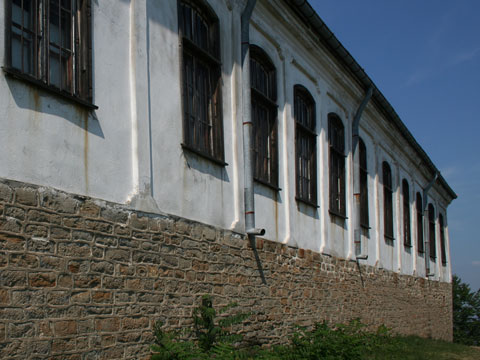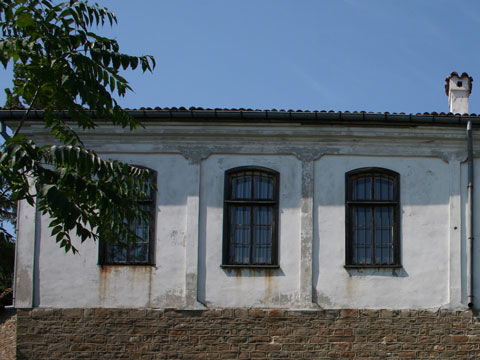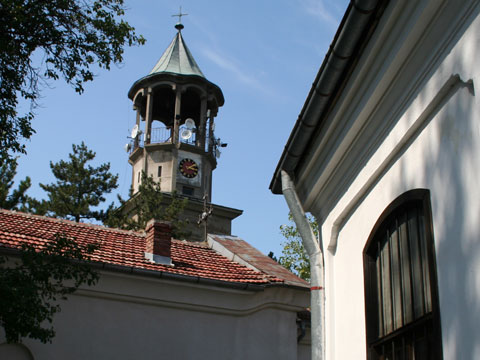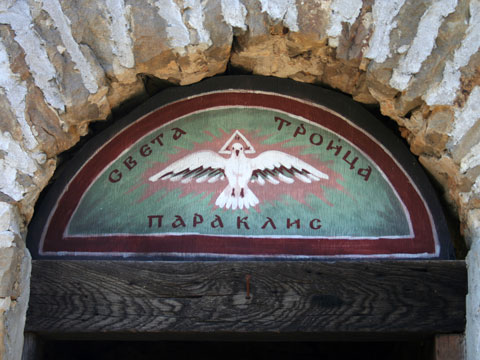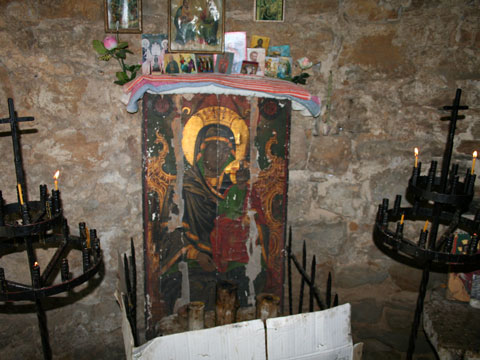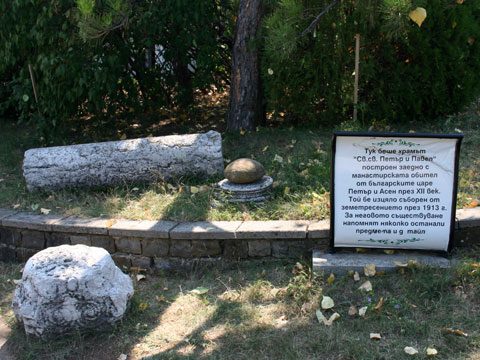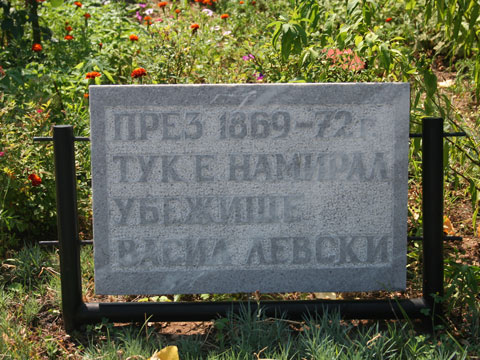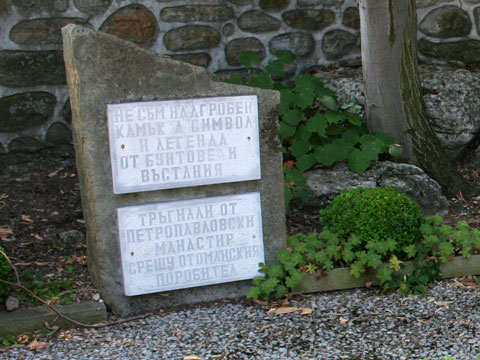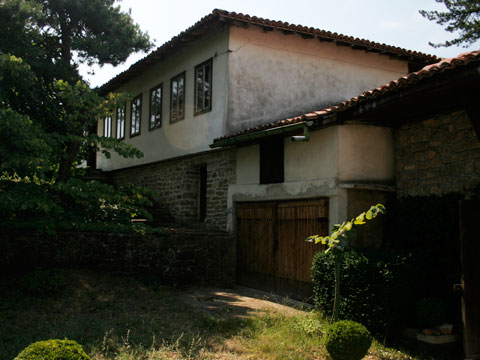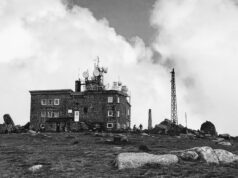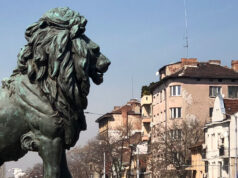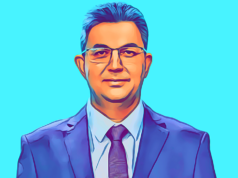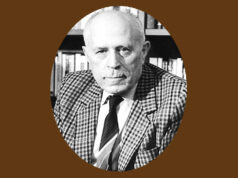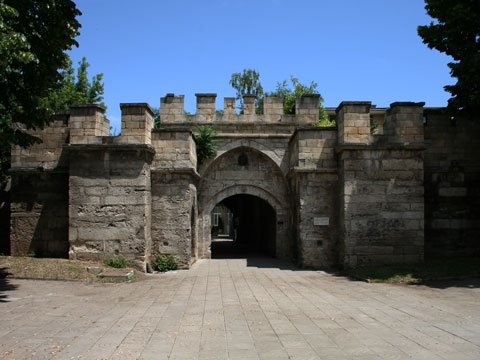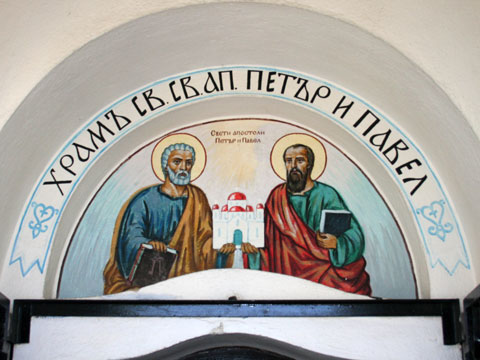 The Saints Peter and Paul Monastery is one of 14 monasteries established around Veliko Tarnovo during the era of the Second Bulgarian Kingdom. It has also been called the Liaskovski Monastery. Perched dramatically on the northern edge of the Arbanasi plateau, the monastery overlooks the town of Liaskovets and the Danubian plain. Remains of an ancient Roman fortress and previous Christian buildings have been found on the site. This relatively remote location, still within close range of the medieval capital at Tarnovo, has been a defensive advantage for the monastery and enabled it to survive and rebuild despite repeated attacks and destruction during the Ottoman yoke.
The Saints Peter and Paul Monastery is one of 14 monasteries established around Veliko Tarnovo during the era of the Second Bulgarian Kingdom. It has also been called the Liaskovski Monastery. Perched dramatically on the northern edge of the Arbanasi plateau, the monastery overlooks the town of Liaskovets and the Danubian plain. Remains of an ancient Roman fortress and previous Christian buildings have been found on the site. This relatively remote location, still within close range of the medieval capital at Tarnovo, has been a defensive advantage for the monastery and enabled it to survive and rebuild despite repeated attacks and destruction during the Ottoman yoke.
The detailed origins of the monastery have been lost in the veils of time, but legend tells of a wealthy benefactor called Boyan, a nobleman from Arbanasi, who built it at the end of the 14th century, endowed it with land, and fled to Romania after the arrival of the Ottoman Turks. The surrounding Boyanska forest bears his name.
 The monastery played an active role in the centuries-long struggle for freedom, including the participation of monks in the planning and execution of revolutionary plots against the Turks. In 1700, the so-called “Widow Mara Uprising” in Veliko Tarnovo, led by her son Stoyan and his colleague Mircho, was planned at the monastery with help from the Abbot Sofronii. In 1856, with the blessing of the local priests, grandfather Nikola led a group of 13 rebels from here on an ill-fated march towards Gabrovo, chased by 300 Turkish troops. The monastery was also the rallying point for the 70 rebels led by Hadji Stavrev in a failed revolt during 1862. In the aftermath of that event, some monks were imprisoned and the Abbot Hadji Teodosy and his brother Hadji Ioasaf were exiled to Diyarbakir, Turkey.
The monastery played an active role in the centuries-long struggle for freedom, including the participation of monks in the planning and execution of revolutionary plots against the Turks. In 1700, the so-called “Widow Mara Uprising” in Veliko Tarnovo, led by her son Stoyan and his colleague Mircho, was planned at the monastery with help from the Abbot Sofronii. In 1856, with the blessing of the local priests, grandfather Nikola led a group of 13 rebels from here on an ill-fated march towards Gabrovo, chased by 300 Turkish troops. The monastery was also the rallying point for the 70 rebels led by Hadji Stavrev in a failed revolt during 1862. In the aftermath of that event, some monks were imprisoned and the Abbot Hadji Teodosy and his brother Hadji Ioasaf were exiled to Diyarbakir, Turkey.
The monastery gave refuge to many leading revolutionaries during the struggle for freedom, including Vasil Levski, Mattei Preobrazhenski Mitkaloto, George Izmirliev, Ivan Panov Semerdjiev and Bacho Kiro Petrov. A memorial plaque commemorating the meeting place can be found in the churchyard.
The monastery also played a leading role in theological education in the country. In 1874, Metropolitan Ilarion Makariopolski founded the first Orthodox theological training school in Bulgaria within the monastery, which operated there until 1885. The school counted among its students Vasil Zlatarski, who later became a famous Bulgarian historian as well as a respected professor at Sofia University and a leader in the Bulgarian Academy of Sciences.
In 1893, the Metropolitan Kliment of Veliko Tarnovo was imprisoned in the monastery during the term of Stefan Stambolov as Prime Minister.
 The Great Earthquake and Fire of 1913 destroyed the monastery church, the east wing and several other buildings, leaving only newly completed seminary buildings still standing. These remain relatively unchanged in appearance even today.
The Great Earthquake and Fire of 1913 destroyed the monastery church, the east wing and several other buildings, leaving only newly completed seminary buildings still standing. These remain relatively unchanged in appearance even today.
The current monastery operates as a convent with pleasant grounds and a peaceful air. The Bell Tower, 31 meters high, dominates the monastery yard, surrounded by gardens and monuments to the illustrious history of this place. The clock was a gift of Maria Genova of Liaskovets, who left the area to live abroad. There is a small chapel, the Holy Trinity Chapel, in the base of the bell tower. A path leads behind the old seminary building, from which visitors may gain an exceptional view out over the surrounding plain below.
The Saints Peter and Paul Monastery is located on the Arbanasi plateau, 6 kilometers northeast of Veliko Tarnovo and 3 kilometers from the town of Liaskovets. The Monastery holds a festival each 28 June, on the eve of the holiday celebrating Saints Peter and Paul in the Bulgarian Orthodox Church.
For information: +359 61 912 093



